Abstract
1. The contractile properties, recruitment and firing rates of motor units from the human adductor pollicis and the first dorsal interosseous were studied during voluntary isometric contractions after 6-8 weeks' immobilization of the corresponding limbs. 2. In both muscles, motor units of different force thresholds showed a proportionally identical twitch tension decrease and slowing of their time course after immobilization. 3. When expressed as a percentage of the maximal voluntary contraction, more high-threshold motor units were recorded in disused muscles than in control muscles, but the order of recruitment was maintained. 4. The motor unit firing rate at recruitment was identical in control and disused muscles, but the maximal firing rate decreased in all motor units after immobilization. This decrease of the maximal firing rate was greater in motor units of lower threshold than in those of higher threshold. 5. The results further document motoneuronal plasticity in human muscles of different fibre type composition.
Full text
PDF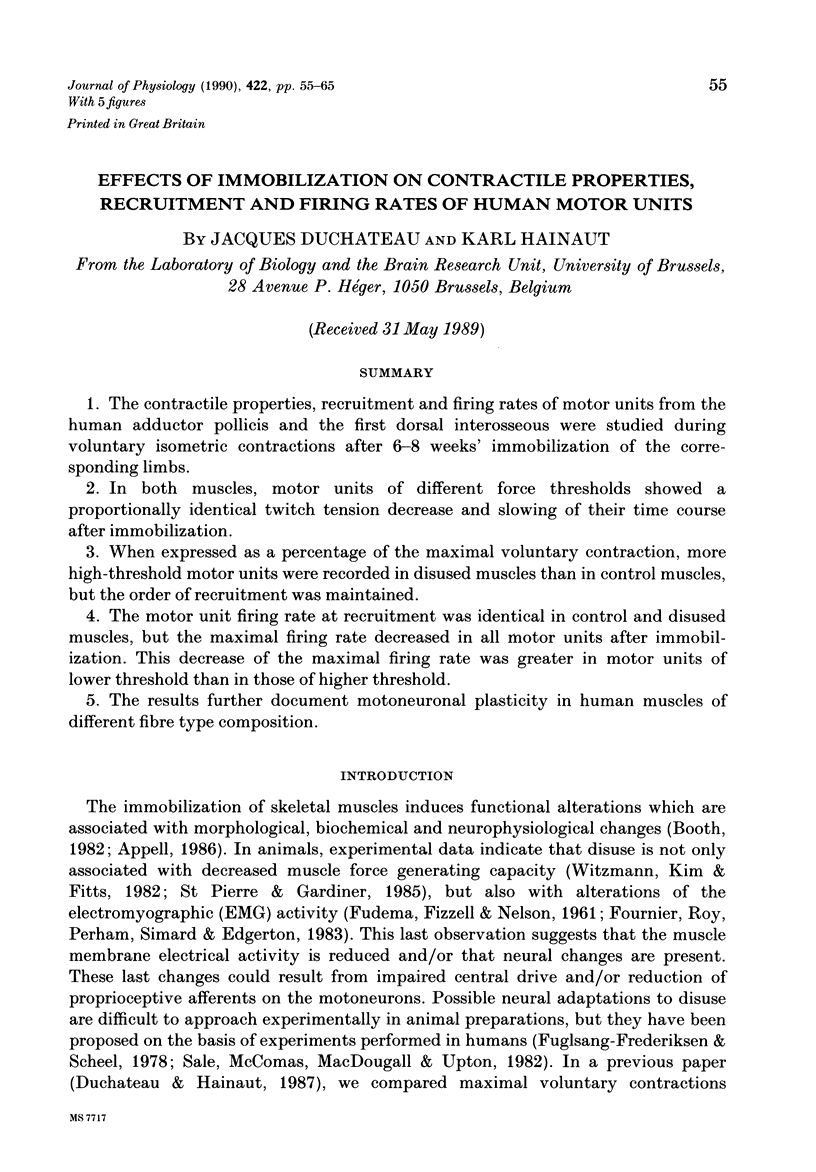
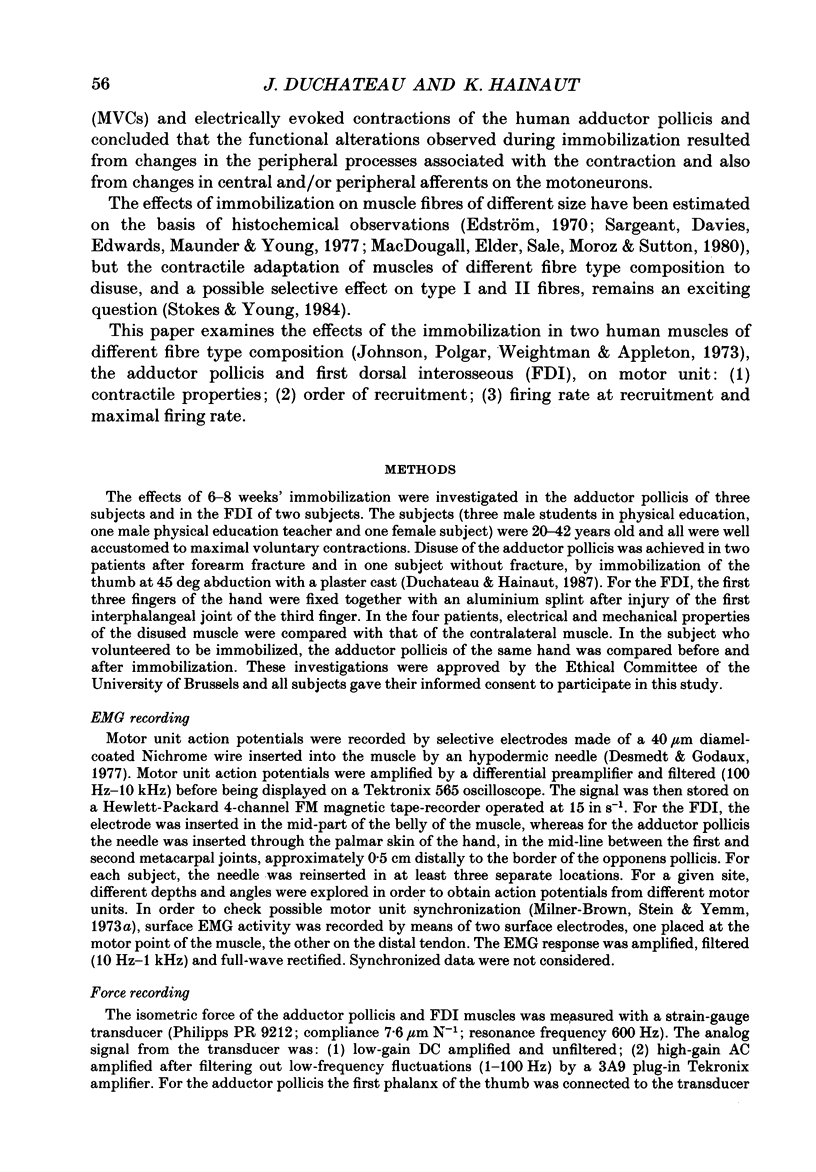
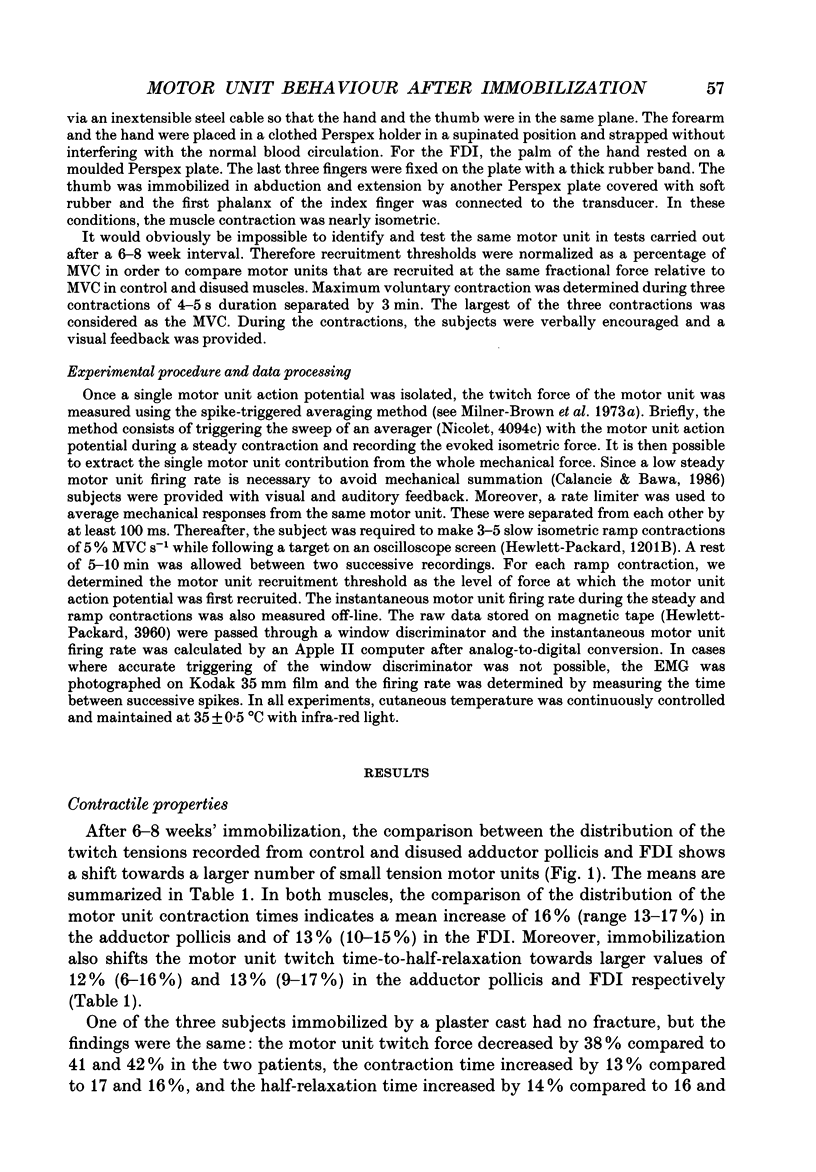
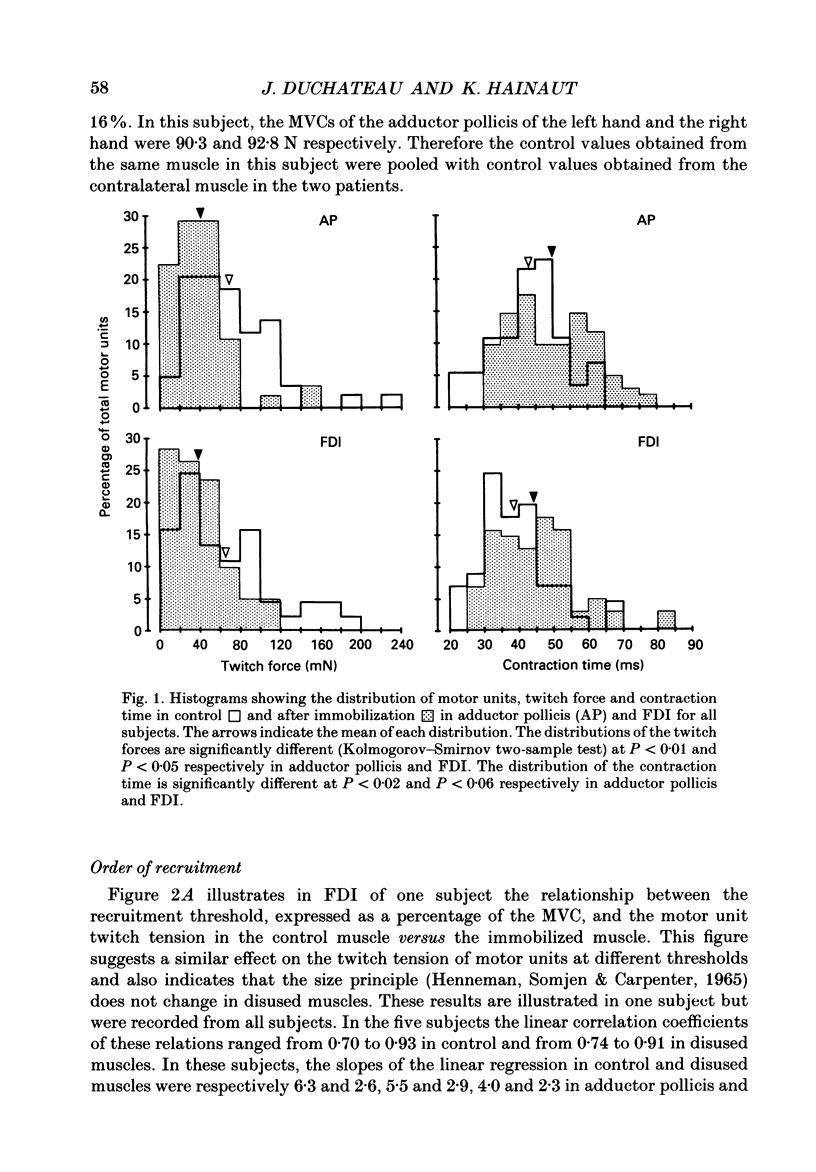
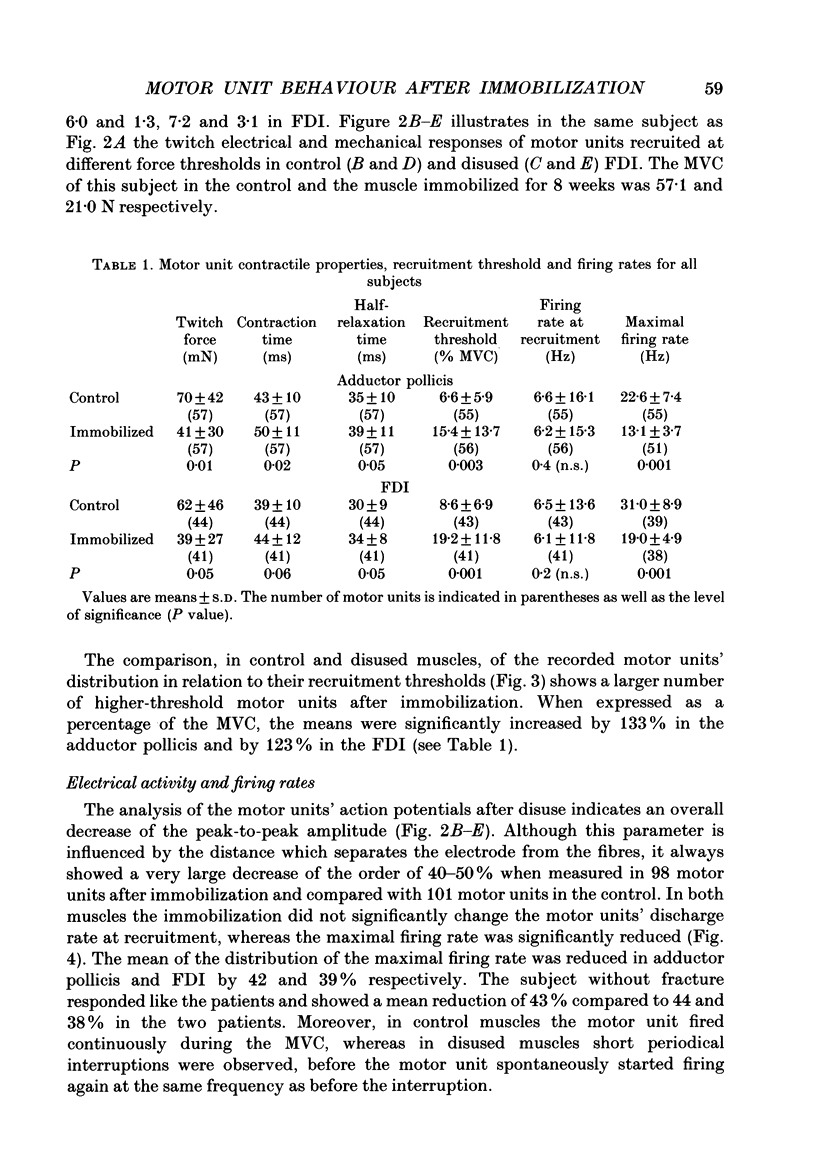
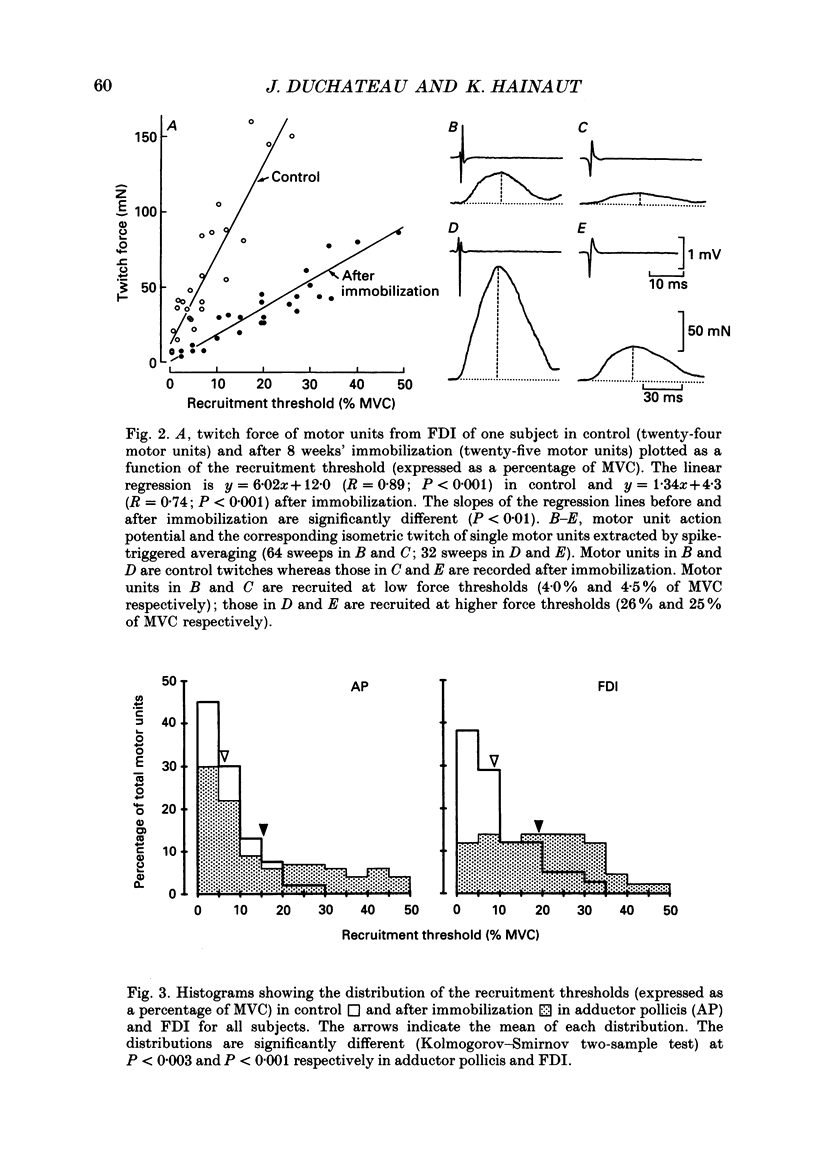

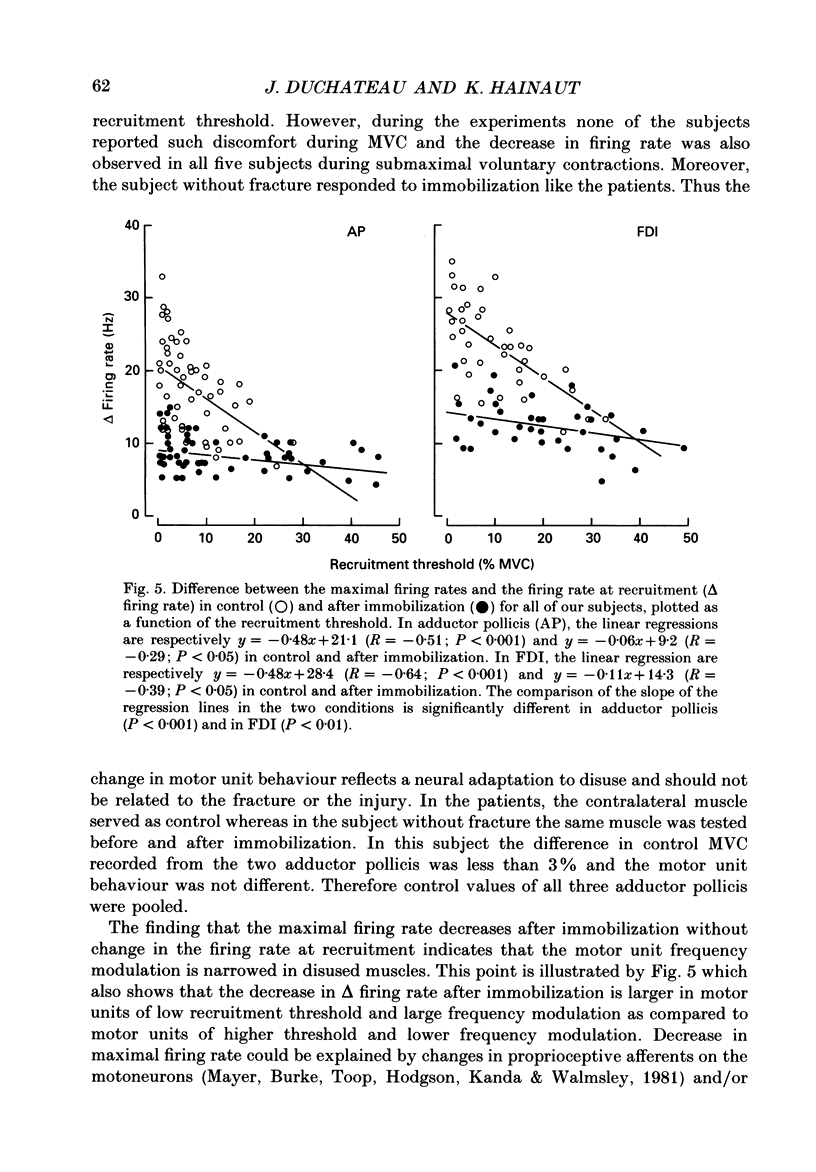
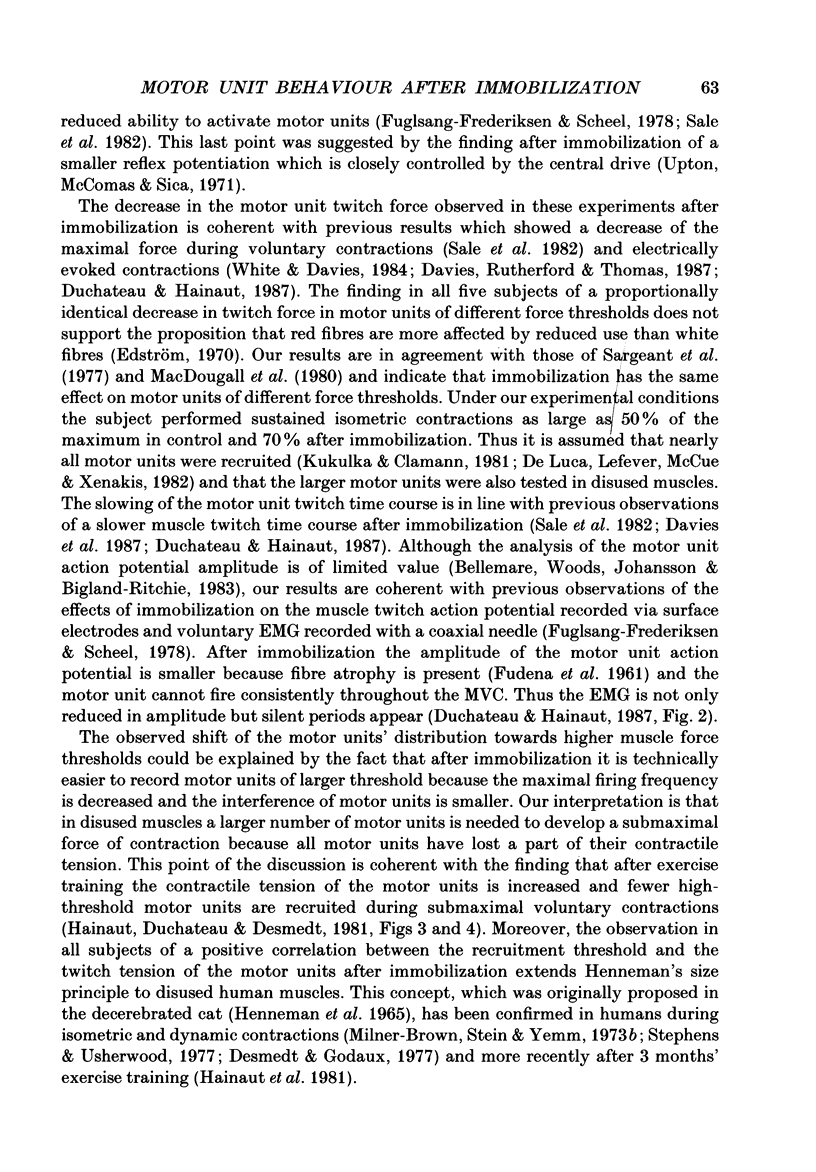
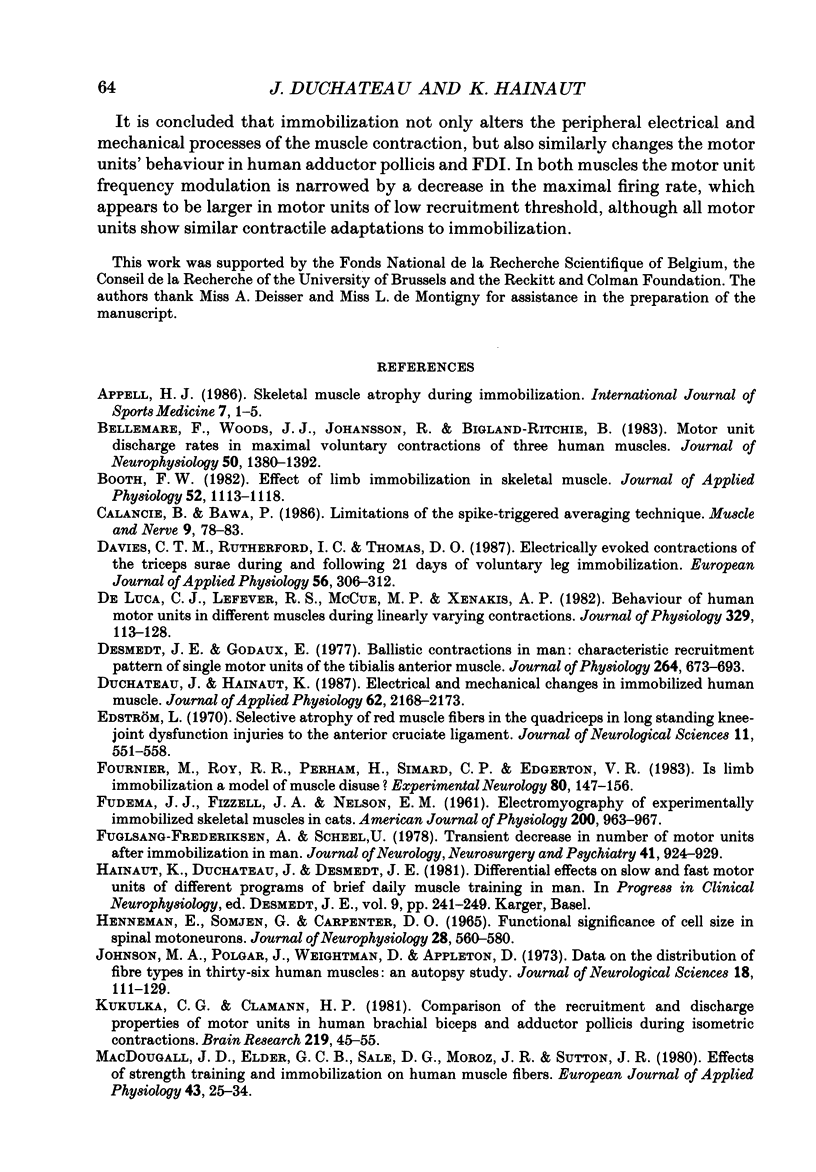
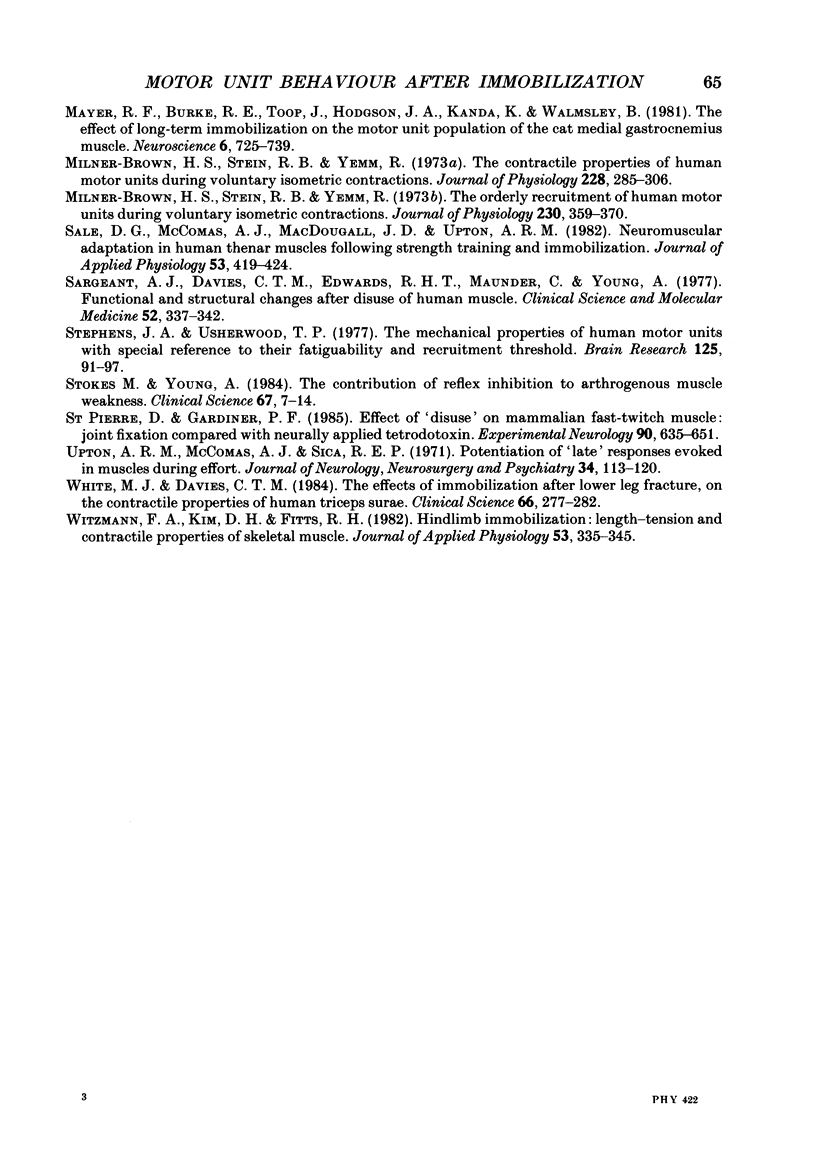
Selected References
These references are in PubMed. This may not be the complete list of references from this article.
- Bellemare F., Woods J. J., Johansson R., Bigland-Ritchie B. Motor-unit discharge rates in maximal voluntary contractions of three human muscles. J Neurophysiol. 1983 Dec;50(6):1380–1392. doi: 10.1152/jn.1983.50.6.1380. [DOI] [PubMed] [Google Scholar]
- Booth F. W. Effect of limb immobilization on skeletal muscle. J Appl Physiol Respir Environ Exerc Physiol. 1982 May;52(5):1113–1118. doi: 10.1152/jappl.1982.52.5.1113. [DOI] [PubMed] [Google Scholar]
- Calancie B., Bawa P. Limitations of the spike-triggered averaging technique. Muscle Nerve. 1986 Jan;9(1):78–83. doi: 10.1002/mus.880090113. [DOI] [PubMed] [Google Scholar]
- Davies C. T., Rutherford I. C., Thomas D. O. Electrically evoked contractions of the triceps surae during and following 21 days of voluntary leg immobilization. Eur J Appl Physiol Occup Physiol. 1987;56(3):306–312. doi: 10.1007/BF00690897. [DOI] [PubMed] [Google Scholar]
- De Luca C. J., LeFever R. S., McCue M. P., Xenakis A. P. Behaviour of human motor units in different muscles during linearly varying contractions. J Physiol. 1982 Aug;329:113–128. doi: 10.1113/jphysiol.1982.sp014293. [DOI] [PMC free article] [PubMed] [Google Scholar]
- Desmedt J. E., Godaux E. Ballistic contractions in man: characteristic recruitment pattern of single motor units of the tibialis anterior muscle. J Physiol. 1977 Jan;264(3):673–693. doi: 10.1113/jphysiol.1977.sp011689. [DOI] [PMC free article] [PubMed] [Google Scholar]
- Duchateau J., Hainaut K. Electrical and mechanical changes in immobilized human muscle. J Appl Physiol (1985) 1987 Jun;62(6):2168–2173. doi: 10.1152/jappl.1987.62.6.2168. [DOI] [PubMed] [Google Scholar]
- FUDEMA J. J., FIZZELL J. A., NELSON E. M. Electromyography of experimentally immobilized skeletal muscles in cats. Am J Physiol. 1961 May;200:963–967. doi: 10.1152/ajplegacy.1961.200.5.963. [DOI] [PubMed] [Google Scholar]
- Fournier M., Roy R. R., Perham H., Simard C. P., Edgerton V. R. Is limb immobilization a model of muscle disuse? Exp Neurol. 1983 Apr;80(1):147–156. doi: 10.1016/0014-4886(83)90011-0. [DOI] [PubMed] [Google Scholar]
- Fuglsang-Frederiksen A., Scheel U. Transient decrease in number of motor units after immobilisation in man. J Neurol Neurosurg Psychiatry. 1978 Oct;41(10):924–929. doi: 10.1136/jnnp.41.10.924. [DOI] [PMC free article] [PubMed] [Google Scholar]
- HENNEMAN E., SOMJEN G., CARPENTER D. O. FUNCTIONAL SIGNIFICANCE OF CELL SIZE IN SPINAL MOTONEURONS. J Neurophysiol. 1965 May;28:560–580. doi: 10.1152/jn.1965.28.3.560. [DOI] [PubMed] [Google Scholar]
- Johnson M. A., Polgar J., Weightman D., Appleton D. Data on the distribution of fibre types in thirty-six human muscles. An autopsy study. J Neurol Sci. 1973 Jan;18(1):111–129. doi: 10.1016/0022-510x(73)90023-3. [DOI] [PubMed] [Google Scholar]
- Kukulka C. G., Clamann H. P. Comparison of the recruitment and discharge properties of motor units in human brachial biceps and adductor pollicis during isometric contractions. Brain Res. 1981 Aug 24;219(1):45–55. doi: 10.1016/0006-8993(81)90266-3. [DOI] [PubMed] [Google Scholar]
- MacDougall J. D., Elder G. C., Sale D. G., Moroz J. R., Sutton J. R. Effects of strength training and immobilization on human muscle fibres. Eur J Appl Physiol Occup Physiol. 1980 Feb;43(1):25–34. doi: 10.1007/BF00421352. [DOI] [PubMed] [Google Scholar]
- Mayer R. F., Burke R. E., Toop J., Hodgson J. A., Kanda K., Walmsley B. W. The effect of long-term immobilization on the motor unit population of the cat medial gastrocnemius muscle. Neuroscience. 1981;6(4):725–739. doi: 10.1016/0306-4522(81)90156-1. [DOI] [PubMed] [Google Scholar]
- Milner-Brown H. S., Stein R. B., Yemm R. The contractile properties of human motor units during voluntary isometric contractions. J Physiol. 1973 Jan;228(2):285–306. doi: 10.1113/jphysiol.1973.sp010087. [DOI] [PMC free article] [PubMed] [Google Scholar]
- Milner-Brown H. S., Stein R. B., Yemm R. The orderly recruitment of human motor units during voluntary isometric contractions. J Physiol. 1973 Apr;230(2):359–370. doi: 10.1113/jphysiol.1973.sp010192. [DOI] [PMC free article] [PubMed] [Google Scholar]
- Sale D. G., McComas A. J., MacDougall J. D., Upton A. R. Neuromuscular adaptation in human thenar muscles following strength training and immobilization. J Appl Physiol Respir Environ Exerc Physiol. 1982 Aug;53(2):419–424. doi: 10.1152/jappl.1982.53.2.419. [DOI] [PubMed] [Google Scholar]
- Sargeant A. J., Davies C. T., Edwards R. H., Maunder C., Young A. Functional and structural changes after disuse of human muscle. Clin Sci Mol Med. 1977 Apr;52(4):337–342. doi: 10.1042/cs0520337. [DOI] [PubMed] [Google Scholar]
- Sica R. E., McComas A. J. Fast and slow twitch units in a human muscle. J Neurol Neurosurg Psychiatry. 1971 Apr;34(2):113–120. doi: 10.1136/jnnp.34.2.113. [DOI] [PMC free article] [PubMed] [Google Scholar]
- St-Pierre D., Gardiner P. F. Effect of "disuse" on mammalian fast-twitch muscle: joint fixation compared with neurally applied tetrodotoxin. Exp Neurol. 1985 Dec;90(3):635–651. doi: 10.1016/0014-4886(85)90161-x. [DOI] [PubMed] [Google Scholar]
- Stephens J. A., Usherwood T. P. The mechanical properties of human motor units with special reference to their fatiguability and recruitment threshold. Brain Res. 1977 Apr 8;125(1):91–97. doi: 10.1016/0006-8993(77)90361-4. [DOI] [PubMed] [Google Scholar]
- Stokes M., Young A. The contribution of reflex inhibition to arthrogenous muscle weakness. Clin Sci (Lond) 1984 Jul;67(1):7–14. doi: 10.1042/cs0670007. [DOI] [PubMed] [Google Scholar]
- White M. J., Davies C. T. The effects of immobilization, after lower leg fracture, on the contractile properties of human triceps surae. Clin Sci (Lond) 1984 Mar;66(3):277–282. doi: 10.1042/cs0660277. [DOI] [PubMed] [Google Scholar]
- Witzmann F. A., Kim D. H., Fitts R. H. Hindlimb immobilization: length-tension and contractile properties of skeletal muscle. J Appl Physiol Respir Environ Exerc Physiol. 1982 Aug;53(2):335–345. doi: 10.1152/jappl.1982.53.2.335. [DOI] [PubMed] [Google Scholar]


